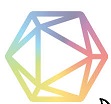Gondra's Exploration of Tube Volume
Abstract
This study aims to explore students' understanding of the concept of cylinder volume through a contextual approach based on the fictional character "Gondra". Gondra is used as a character in story problems that are used as a medium to attract attention and improve students' understanding of mathematical concepts. Using a descriptive qualitative approach, data were collected through observations, interviews, and written tests of sixth-grade elementary school students. The results of the study indicate that a narrative-based approach with the character Gondra is able to improve students' understanding in determining the volume of a cylinder conceptually and procedurally. This study also shows a higher emotional involvement of students in solving contextual mathematical problems.
Keywords
Full Text:
PDFReferences
Arends, R. I. (2012). Learning to Teach. McGraw-Hill.
Bruner, J. (1966). Toward a Theory of Instruction. Harvard University Press.
D’Ambrosio, U. (1985). Ethnomathematics and its place in the history and pedagogy of mathematics. FLM Journal.
Hamdani. (2011). Strategi Belajar Mengajar. Pustaka Setia.
Hasibuan, J. (1985). Seni budaya Batak. Jakarta: Jayakarta Agung.
Johnson, E. B. (2002). Contextual teaching and learning: What it is and why it's here to stay. Corwin Press.
Koentjaraningrat. (2005). Pengantar antropologi. Jakarta: Rineka Cipta.
Komalasari, K. (2010). Pembelajaran Kontekstual: Konsep dan Aplikasi. Refika Aditama.
Miles, M. B., & Huberman, A. M. (1994). Qualitative data analysis. Sage.
Moleong, L. J. (2012). Metodologi penelitian kualitatif. Bandung: PT Remaja Rosdakarya.
NCTM. (2000). Principles and Standards for School Mathematics. Reston, VA: National Council of Teachers of Mathematics.
Permendikbud. (2016). Peraturan Menteri Pendidikan dan Kebudayaan Republik Indonesia Nomor 22 Tahun 2016 tentang Standar Proses Pendidikan Dasar dan Menengah.
Rosa, M., & Orey, D. C. (2016). Ethnomathematics and mathematics education. Springer.
Saragih, S., & Afriati, V. (2012). Peningkatan pemahaman konsep grafik trigonometri siswa SMK melalui penemuan terbimbing berbantuan software Autograph. Jurnal Pendidikan dan Kebudayaan, 18(4), 368–381.
Saragih, S., & Napitupulu, E. (2015). Developing student-centered learning model to improve high order mathematical thinking ability. Canadian Center of Science and Education, 8(6), 104–112.
Siagian, S. G. (2004). Studi tentang ornamen Batak Toba di Ruma Gorga Mangampu Tua 2 Jakarta. Yogyakarta: ISI Yogyakarta.
Siahaan, R. (2006). Gorga Singa-singa sebagai sumber ide penciptaan karya seni lukis. Medan: Unimed.
Siahaan, U. (2019). Ornamen rumah Batak Toba. Jurnal SCALE, 6(2), 74. http://ejournal.fakultasteknikuki.asia/ojs/index.php/scalearsuki/article/download/45/42
Sibeth, A. (2007). The Batak, people of the island of Sumatra. London: Thames & Hudson Ltd.
Simamora, T. (1997). Rumah Batak: Usaha inkulturatif. Pematang Siantar.
Singarimbun, M., & Effendi, S. (2011). Metode penelitian survai. Jakarta: Pustaka LP3ES.
Situngkir, H. (2011). Rekomendasi Renesans Indonesia. BFI Working Paper Series WP 3-2011.
Situngkir, H., & Dahlan, R. (2007). Fisika Batik: Jejak sains modern Indonesia dalam seni tradisi. Jakarta: Gramedia Pustaka Utama.
Susanto, A. (2015). Teori Belajar dan Pembelajaran di Sekolah Dasar. Prenadamedia Group.
Tambunan, H. (2019). Faktor kinerja guru matematika sebagai motivator terhadap prestasi belajar siswa. Prosiding Seminar Nasional Matematika dan Terapan 2019, 1, 918–922.
Tambunan, H. (2019). The effectiveness of problem solving strategy. International Electronic Journal of Mathematics Education, 14(2), 293–302.
Tambunan, H. (2019). The effectiveness of the problem solving strategy and scientific approach to students’ mathematical capabilities in high order thinking skills. International Electronic Journal of Mathematics Education, 14(2), 293–302.
Tambunan, H., & Naibaho, T. (2019). Performance of mathematics teachers to build students' high order thinking skills (HOTS). Journal of Education and Learning (EduLearn), 13(1), 111–117.
Tambunan, H., Sinaga, B., & Widada, W. (2021). Analysis of teacher performance to build student interest and motivation towards mathematics achievement. International Journal of Education and Research in Education (IJERE), 10(1), 42–47.
Yuliani, K., & Saragih, S. (2015). Development of guided discovery model. Journal of Education and Practice, 6(24), 116–128.
DOI: http://dx.doi.org/10.58258/jime.v11i3.9095
Refbacks
- There are currently no refbacks.
Copyright (c) 2025 Chandra Saptanto Juraganda S

This work is licensed under a Creative Commons Attribution-ShareAlike 4.0 International License.

JIME: Jurnal Ilmiah Mandala Education (p-issn: 2442-9511;e-issn: 2656-5862) is licensed under a Creative Commons Attribution-ShareAlike 4.0 International License.
Jurnal ini diterbitkan oleh Lembaga Penelitian dan Pendidikan (LPP) Mandala.
Alamat: Jl. Lingkar Selatan, Perum Elit kota Mataram Asri Blok O. No. 35, Jempong Baru, Sekarbela, Kota Mataram NTB.







.png)



